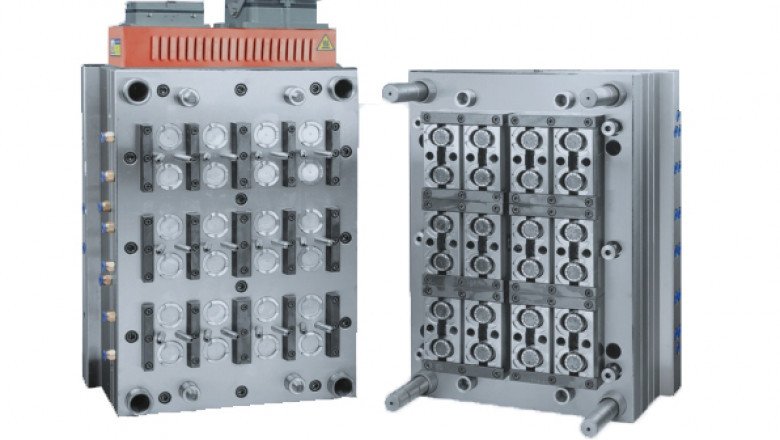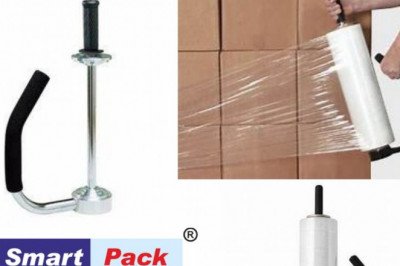
views
What are the classifications of mold forming
The plastic is first added to the heating barrel of the injection machine. The plastic is heated and melted. Driven by the screw or plunger of the injection machine, it enters the mold cavity through the nozzle and the mold pouring system. It is hardened and shaped into injection molding due to physical and chemical effects. Products. Injection molding consists of a cycle consisting of injection, pressure holding (cooling) and demolding of plastic parts, so injection molding has periodic characteristics. The molding cycle of thermoplastic injection molding is short, the production efficiency is high, the wear of the melt on the mold is small, and the plastic parts with complex shapes, clear surface patterns and markings, and high dimensional accuracy can be molded in large quantities; but for plastics with large wall thickness changes It is difficult to avoid molding defects. The anisotropy of plastic parts is also one of the quality problems, and all possible measures should be adopted to minimize it.
(2) Compression molding
Commonly known as compression molding, it is one of the earliest methods of forming plastic parts. Compression molding is to add plastic directly into an open mold cavity with a certain temperature, and then close the mold. Under the action of heat and pressure, the plastic melts and becomes a fluid state. Due to physical and chemical effects, the plastic is hardened into a plastic part with a certain shape and size that remains unchanged at room temperature. Compression molding is mainly used to mold thermosetting plastics, such as phenolic molding powder, urea-formaldehyde and melamine-formaldehyde molding powder, glass fiber reinforced phenolic plastic, epoxy resin, DAP resin, silicone resin, polyimide and other molding materials. It can also be formed into unsaturated polyester material (DMC), sheet molding compound (SMC), prefabricated integral molding compound (BMC), etc. In general, according to the matching structure of the upper and lower molds of the compression film, the compression molds are divided into three types: overflow, non-flooding, and semi-flooding.
(3) Extrusion molding
It is a molding method in which the plastic in a viscous flow state passes through a die with a specific cross-sectional shape under a high temperature and a certain pressure, and then is shaped into a continuous profile with a desired cross-sectional shape at a lower temperature. The production process of extrusion molding includes preparation of molding materials, extrusion molding, cooling and shaping, traction and cutting, and post-processing of extruded products (tempering or heat treatment). In the extrusion molding process, pay attention to adjusting the temperature of each heating section of the extruder barrel and the temperature of the die head, the number of screw rotations, the traction speed and other process parameters in order to obtain qualified extruded profiles. Special attention should be paid to adjusting the rate of polymer melt extruding from the die. Because when the extrusion rate of the molten material is low, the extrudate has a smooth surface and a uniform cross-sectional shape; but when the extrusion rate of the molten material reaches a certain limit, the surface of the extrudate will become rough and lose gloss , There are phenomena such as shark skin, orange peel, and shape distortion. When the extrusion rate is further increased, the surface of the extrudate is distorted, and even splits and breaks into melt fragments or cylinders. Therefore, the control of the extrusion rate is very important.
(4) Injection molding
Also known as die casting. It is to put the plastic raw materials into the preheated feeding chamber, and then put the pressing column into the feeding chamber to lock the mold, apply pressure to the plastic through the pressing column, the plastic melts into a flowing state under high temperature and high pressure, and enters the cavity through the casting system Gradually solidify into plastic parts. This type of molding method is also called transfer molding. Injection molding is suitable for plastics that are lower than solid plastics. In principle, plastics that can be compression molded can also be molded by injection molding. But it is required that the molding material has good fluidity in the molten state when it is lower than the solidification temperature, and has a larger solidification rate when it is higher than the solidification temperature.
(5) Hollow molding
It is to fix the tendency of the tubular or sheet blank material made by extrusion or injection, which is still in the plasticized state, into the forming mold, and immediately pass in compressed air to force the blank material to expand and stick to the wall of the mold cavity. After cooling and shaping, demoulding is a processing method for obtaining the required hollow products. Plastics suitable for hollow molding are high-pressure polyethylene, low-pressure polyethylene, rigid polyvinyl chloride, soft polyvinyl chloride, polystyrene, polypropylene, polycarbonate, etc. According to different parison molding methods, hollow molding is mainly divided into extrusion blow molding and injection blow molding. The advantage of extrusion blow molding hollow molding is that the structure of the extruder and the extrusion blow molding die is simple, but the disadvantage is that the wall thickness of the parison is inconsistent, which easily causes the wall thickness of the plastic product to be uneven. The right figure is a schematic diagram of the principle of extrusion blow molding hollow molding. The advantage of injection blow molding hollow molding is that the wall thickness of the parison is uniform and there is no flash. Because the injection parison has a bottom surface, the bottom of the hollow product will not have seams, which is not only beautiful but also high in strength. The disadvantage is that the molding equipment and molds used are expensive, so this molding method is mostly used for mass production of small hollow products, and it is not widely used in extrusion blow molding.
(6) Die casting mould
Die casting mould is also called transfer mould. The plastic raw materials are added to the preheated feeding chamber, and then pressure is applied to the pressure column. The plastic is melted under high temperature and high pressure, and enters the cavity through the casting system of the mold, and gradually hardens into shape. This molding method is called die-casting. The mold used It is called a die-casting mold. This kind of mold is mostly used for the molding of thermoset plastics.
In addition, there are foam molding molds, glass fiber reinforced plastic low pressure molding molds, and so on.












Comments
0 comment